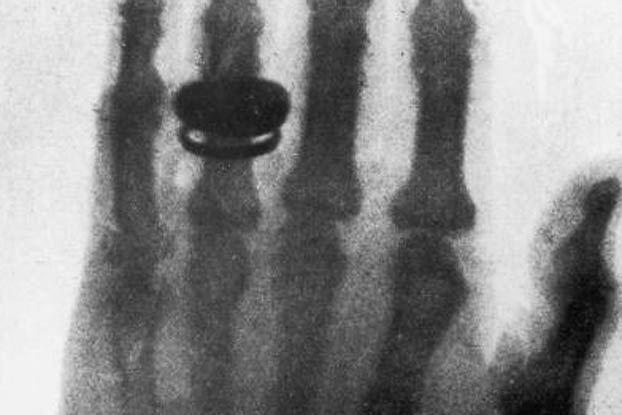4. Elizabeth Fleischmann-Aschheim Gives Herself Radiation Poisoning

When Wilhelm Rontgen discovered the X-ray in 1895, the news swept not just the medical community, but the media as well. That’s how 30-year-old Elizabeth Fleischmann-Aschheim learned about the discovery that captivated her imagination. Though she never completed high school, she decided to learn all about radiophotography and became a very skilled radiographer in just a year, thanks to help from her brother-in-law, who was a physician.
Fleischmann opened California’s very first X-ray laboratory, making her the first radiographer in the state. These accomplishments were no small feat in the late 1800s, especially for a woman.
Fleischmann and her brother-in-law performed many X-ray experiments, sometimes involving hours of radiation exposure. But from early on, it was clear that X-ray exposure was dangerous: More than 20 radiologists and X-ray manufacturers had reported severe injuries after repeated or long-term exposure by the end of 1896.
Despite the evidence that radiologists should take safety precautions, Fleischmann refused to wear protective gear, because she was afraid it would scare off her patients. She paid for that stubbornness with her life. In 1905 she died from radiation poisoning when she was only 46 years old.
3. Jonah Lehrer Plagiarizes … Himself

Journalist Jonah Lehrer rose to stardom by age 31. He wrote for prestigious publications like the Wall Street Journal and The New Yorker and was a published author. His books focused on neuroscience, including “Imagine: How Creativity Works,” about how the creative brain works.
In June of 2012, Lehrer got caught plagiarizing, a cardinal sin in journalism. Unlike most cases of plagiarism, though, Lehrer actually copied … himself. He reused whole paragraphs from his Wall Street Journal pieces in blog posts that he wrote for The New Yorker. In a New York Times interview, Lehrer apologized for the plagiarism, saying it was just plain laziness that drove him to duplicate his work across the two publications.
That alone might not have been enough to permanently damage his career — the words he copied were his own, even if it was unethical to recycle them without his publisher’s knowledge — but just a month later, the magazine Tablet outed him for making up Bob Dylan quotes for “Imagine” and then lying about it.
Tablet reporter Michael C. Moynihan questioned Lehrer about some of the quotes in “Imagine,” and Lehrer told him that the quotes came from an old interview that had not been made public. Lehrer later admitted that he made up the quotes, and that when Moynihan questioned their veracity, he panicked and lied about the source.
When the story broke, “Imagine” publisher Houghton Mifflin Harcourt pulled the e-book and stopped all shipments of the book’s physical copy. Lehrer also resigned in disgrace as a writer for The New Yorker.

